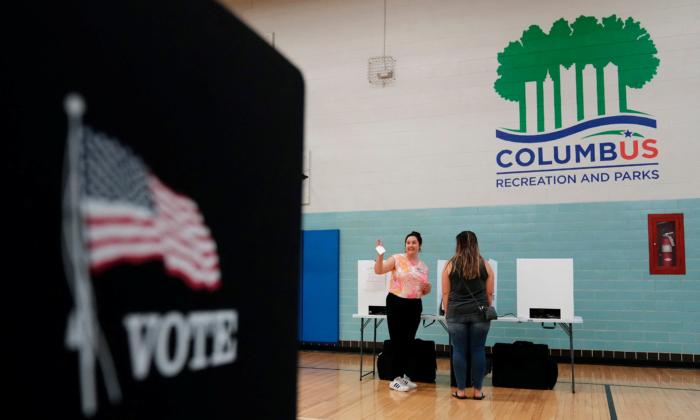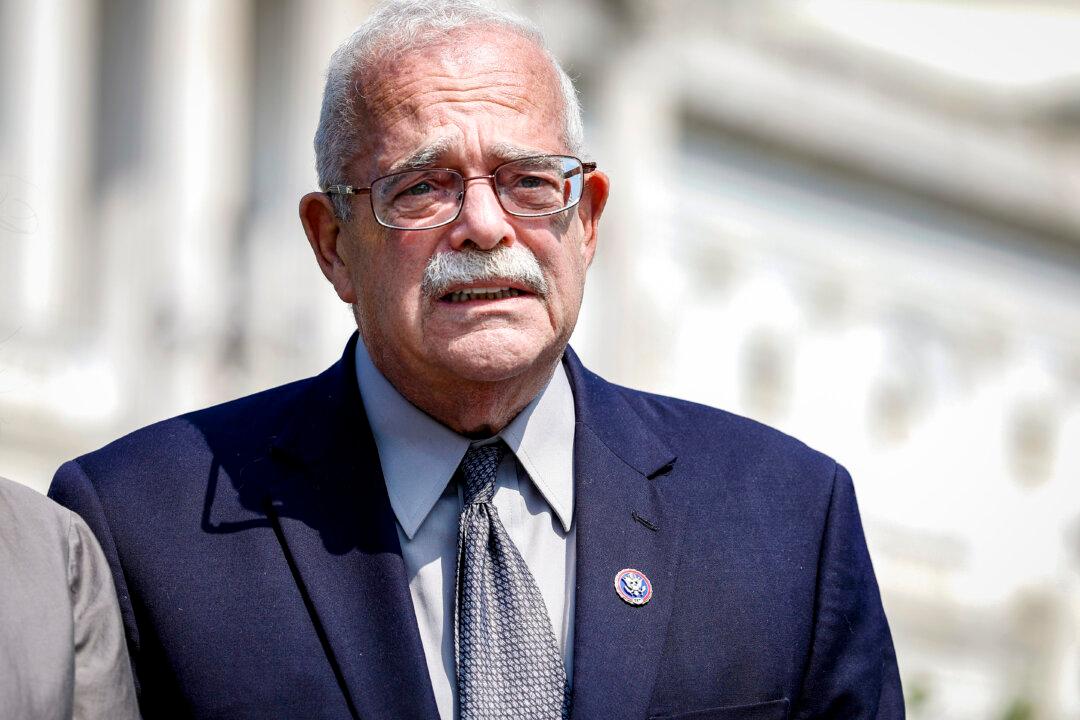HIGHLAND COUNTY, Ohio—Ohioans voted on Aug. 8 to reject stricter requirements for citizen-initiated amendments to the state’s constitution in a move that could bode well for activists’ efforts to codify abortion rights later this year.
A “yes” vote on Issue 1 also indicated support for requiring petitioners to gather signatures from all 88 counties—up from the current standard of 44—and nixing the 10-day cure period allowing the collection of additional signatures if a petition is found to have initially missed the mark.
And with Issue 1’s failure Tuesday, another victory may be on the horizon for pro-abortion activists.

Political Campaigns
In the lead-up to Election Day, campaigns both for and against Issue 1 argued that the measure would cede power to out-of-state interest groups.While Republicans promoted the amendment as a safeguard to prevent outside groups from influencing the Ohio Constitution, Democrats charged that the measure itself was being pushed by outside extremists aiming to thwart the will of the voters on the proposed abortion amendment.
Specifically, the measure on the November ballot asserts a right to “make and carry out one’s own reproductive decisions, including but not limited to decisions on contraception, fertility treatment, continuing one’s own pregnancy, miscarriage care, and abortion.”
Currently, abortion is legal in Ohio through 22 weeks of pregnancy as enforcement of a six-week limit on the procedure—passed in 2019—has been halted by legal challenges.
Thus, Democrats argued that abortion was on the ballot Tuesday, if only indirectly.
Yet despite the two camps’ protestations about outsiders, a review of campaign finance records shows that both were largely funded by out-of-state groups and donors.
Specifically, Protect Our Constitution, the coalition promoting Issue 1, received $4 million of its $4.8 million in contributions from billionaire Richard Uihlein, an Illinois business owner.
Likewise, nearly 85 percent of the $14.8 million in contributions made to One Person One Vote, the group leading the opposition, came from outside groups, including dark money groups like the Washington-based Sixteen Thirty Fund.

Voters Sound Off
Highland County, located in the Appalachian foothills of southwest Ohio, is one of the least populated counties in the state with 43,000 residents. Hillsboro, the county seat, has around 6,400 people. In the 2020 presidential election, Donald Trump defeated Joe Biden by a 79.7 percent to 19.3 percent margin.Pamela Kellough is a local muralist whose work depicts the region’s history in towns across Highland and Adams counties in southern Ohio. On Aug. 8, she took a break from her current project and sat in the car with her husband, Gary.
“We voted early, and we voted no,” Ms. Kellough said when asked about Issue 1.
“If it reaches that percentage (60 percent), few issues will get passed,” Mr. Kellough said. “There is so much division in our country already. Making it more difficult for the majority will only increase that division because if 59 percent is still not enough, then the majority isn’t truly considered.”
Proponents of Issue 1 believe that the measure is needed so that all 88 of Ohio’s counties can have an equal impact in elections. Mr. Kellough disagrees.
“I’m not a fan of the Electoral College in national elections,” Mr. Kellough said. “The bigger cities have the highest population base and are affected more than rural communities. I think the 50 percent-plus-one standard is what’s best for Ohio.”
Like with Mr. Kellough, the Electoral College was front of mind for West Dayton voter Al Barkalow when he cast his vote Tuesday morning. But for Mr. Barkalow, that comparison is what prompted him to vote “yes.”
“If the Electoral College didn’t exist, then New York, California, and a few other highly populated states would determine every election. That is not what our founding fathers had in mind,” he noted.
“Right now, cities like Cincinnati, Columbus, and Cleveland have a major impact on what happens in Ohio. Much of Ohio is rural, and people in those counties are left out. Passing Issue 1 would level the playing field and give every county more equal representation,” he added.
Dalton Black is a 22-year-old conservative voter who lives in Winchester, a small town around a half-hour south of Hillsboro in Adams County, another area that usually votes Republican in statewide and national elections.
The bottom 25 percent of Ohio’s lowest populated counties only account for over 550,000 residents while the most populated county has more than 1.3 million people. “It’s easy to see who has a voice in amending our constitution,” Mr. Black said. “By changing the petition threshold to include signatures from all counties instead of just 44, and creating a 60 percent vote requirement, that ensures all areas of Ohio benefit from the amendment process and not just select urban areas.”
“I voted for Issue 1 because I believe that a document that tells the government what powers they have and don’t have should be more difficult to change,” Mr. Black added. “A single political party in power should not be able [to] alter it [the Constitution] as they please without an overwhelming majority vote from who they represent in all parts of the state.”
At the federal level, constitutional amendments must be ratified by three-fourths of the states, or 38 states, to become part of the U.S. Constitution. And that is only after they have been successfully proposed, either by a two-thirds majority in both congressional chambers or a two-thirds majority of the states at a convention called by Congress.
The 60 percent majority outlined in Issue 1 fell below both of those thresholds, though apparently not far enough for Ohio voters on Tuesday.






